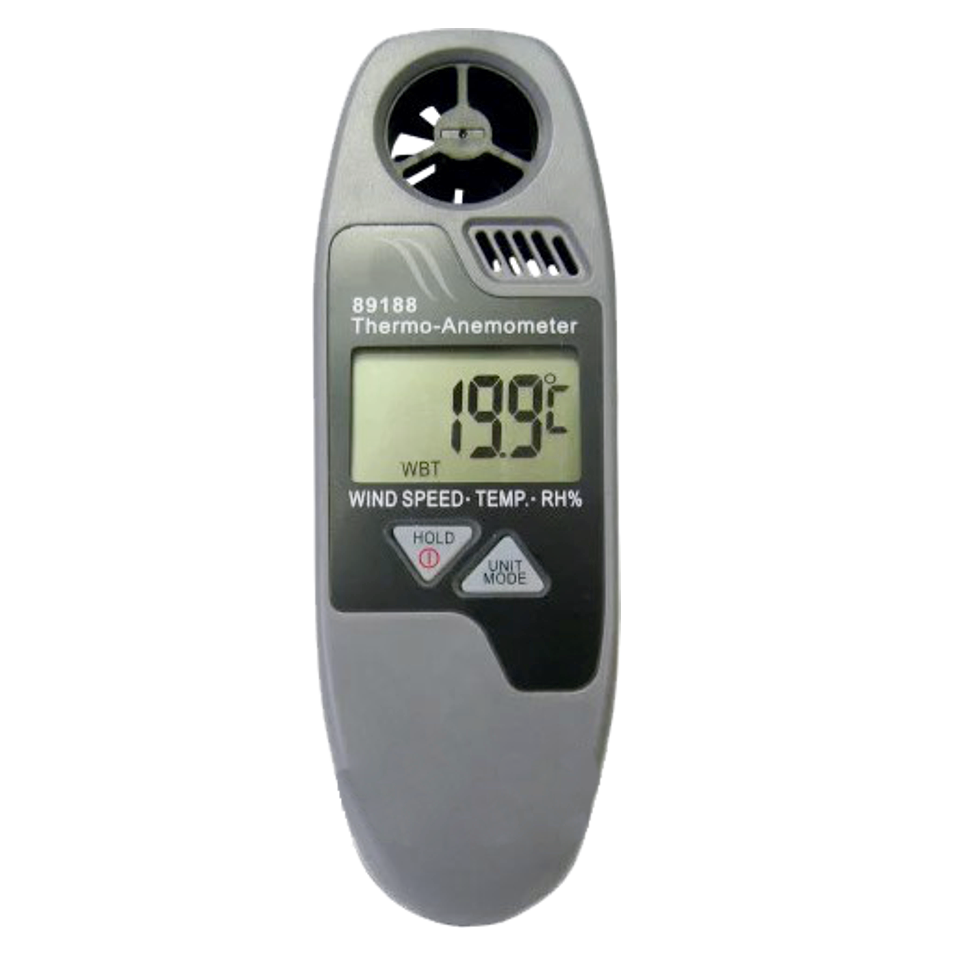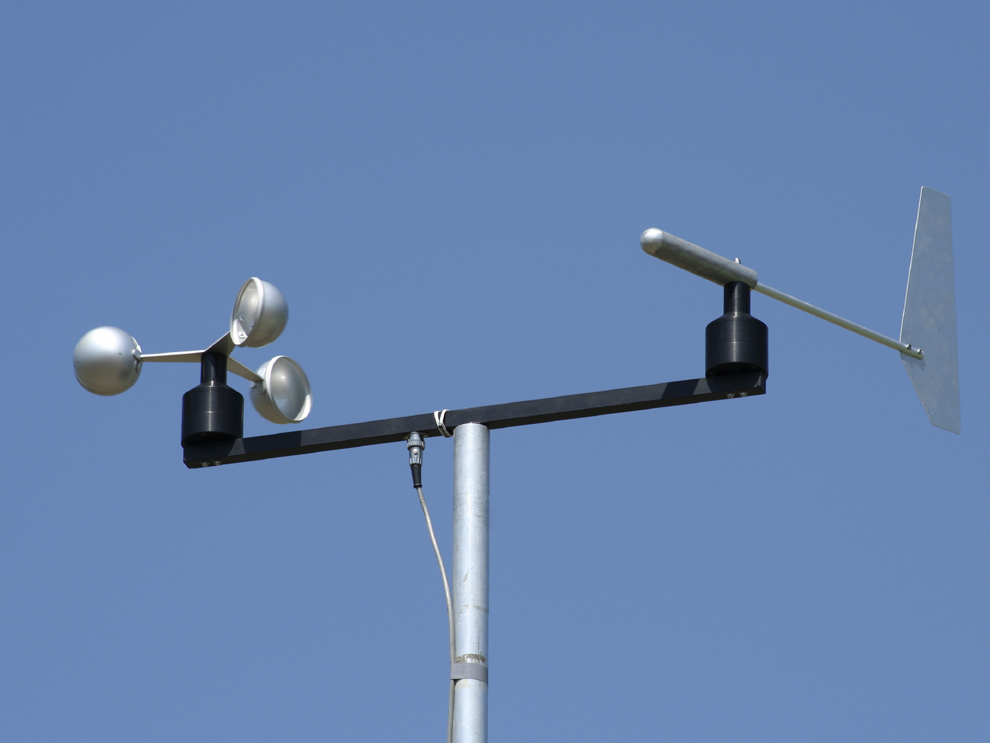Understanding Different Types of Anemometers for Numerous Applications
Understanding Different Types of Anemometers for Numerous Applications
Blog Article
Discovering the Features and Advantages of Anemometers for Climate Enthusiasts and Professionals
Anemometers stand as instrumental devices in the realm of weather surveillance, accommodating both enthusiasts and seasoned professionals alike. These gadgets supply a window right into the vibrant globe of wind patterns and rates, supplying vital data for meteorological analysis and forecasting. From cup anemometers to sonic anemometers, each kind brings its unique collection of benefits and applications, dropping light on different elements of weather. As we look into the features and advantages of anemometers, a deeper understanding emerges not just of prevailing weather phenomena yet additionally of the wider ramifications for industries like wind energy production and ecological study.
Importance of Anemometers in Weather Surveillance
Anemometers play a crucial role in climate monitoring by offering exact dimensions of wind rate, aiding in forecasting and understanding climate patterns. These tools, varying from conventional cup anemometers to modern ultrasonic anemometers, are crucial for meteorologists, researchers, and weather lovers alike.

Kinds Of Anemometers and Their Applications
The most typical types of anemometers include cup anemometers, vane anemometers, hot-wire anemometers, and ultrasonic anemometers. Mug anemometers consist of three or 4 cups placed on horizontal arms that revolve with the wind, determining its speed. Vane anemometers, on the other hand, use an openly rotating vane to straighten with the wind direction, supplying both wind speed and instructions measurements.
Each kind of anemometer has its distinct benefits and applications. Cup anemometers are suitable and durable for basic climate monitoring, while vane anemometers are preferred for directional measurements. Hot-wire anemometers are delicate to low air rates, making them suitable for indoor atmospheres. Ultrasonic anemometers are non-intrusive and offer high precision, frequently made use of in study and specialized weather monitoring applications. Comprehending the features and applications of each kind of anemometer is essential for selecting one of the most appropriate tool for details weather monitoring requirements.
Advantages of Using Anemometers in Forecasting
In meteorology, the use of anemometers offers important advantages for improving the accuracy of weather forecasting. Anemometers determine wind rate and instructions, supplying essential data for predicting weather patterns. By incorporating wind information right into projecting designs, meteorologists can better recognize the movement of climate systems, prepare for changes in weather, and concern a lot more exact forecasts.
Moreover, anemometers play an essential duty in analyzing possible weather condition risks. Keeping track of wind speeds aids forecasters anticipate severe weather condition occasions such as typhoons, twisters, and winter season tornados with higher accuracy. This very early warning system enables authorities to release timely alerts and apply needed safety actions, minimizing the risks to life and residential property.
Furthermore, anemometers aid in enhancing renewable power manufacturing. By assessing wind patterns, meteorologists can identify ideal places for wind farms and forecast energy result, adding to the effective generation of wind power.

Anemometers in Wind Power Production
Provided the critical duty anemometers play in offering precise wind information for weather forecasting and danger analysis, their significance prolongs to the world of wind power manufacturing. Anemometers are important tools in the area of wind power, where the dimension of wind rate and instructions is essential for figuring out the usefulness and efficiency of wind turbine installations. By precisely determining wind speeds at varying heights, anemometers assist maximize the positioning see this website and layout of wind turbines to make best use of power outcome.
In wind ranches, anemometers are strategically put to accumulate real-time wind data that is used to examine the prospective energy manufacturing of a site. This data is important in figuring out the financial practicality of wind power tasks and in projecting power generation to make sure grid stability. In addition, anemometers help in monitoring wind conditions to maximize generator efficiency, stop damage from high winds, and guarantee the security of employees functioning in the area of wind turbines.
Enhancing Weather Understanding With Anemometers

Anemometers click for more info play a crucial function in improving our understanding of microclimates. These localized climate condition can vary substantially from broader regional forecasts, making it important to have accurate data for specific locations. anemometer. By purposefully Visit This Link positioning anemometers in numerous locations, researchers can collect thorough details on just how wind behaves in different terrains, city atmospheres, or bodies of water
Moreover, anemometers add to improving climate projecting designs by offering real-time data on wind actions. This info is especially important for predicting extreme weather condition events, optimizing farming practices, and supporting sectors like air travel and maritime navigation. Overall, anemometers are invaluable tools that enable us to dive much deeper right into the intricacies of weather condition systems, ultimately bring about more accurate forecasts and better-informed decisions.
Final Thought
In verdict, anemometers play a crucial duty in weather monitoring and forecasting by gauging wind speed and instructions. Anemometers likewise have applications in wind energy production, additional highlighting their value in both weather forecasting and eco-friendly energy markets.
From cup anemometers to sonic anemometers, each type brings its one-of-a-kind collection of applications and benefits, shedding light on different elements of atmospheric problems. These tools, ranging from typical mug anemometers to contemporary ultrasonic anemometers, are important for meteorologists, scientists, and climate enthusiasts alike. The most common kinds of anemometers include mug anemometers, vane anemometers, hot-wire anemometers, and ultrasonic anemometers. Mug anemometers are durable and ideal for basic weather monitoring, while vane anemometers are favored for directional dimensions. Anemometers are vital tools in the area of wind energy, where the measurement of wind rate and direction is essential for determining the usefulness and efficiency of wind turbine setups.
Report this page